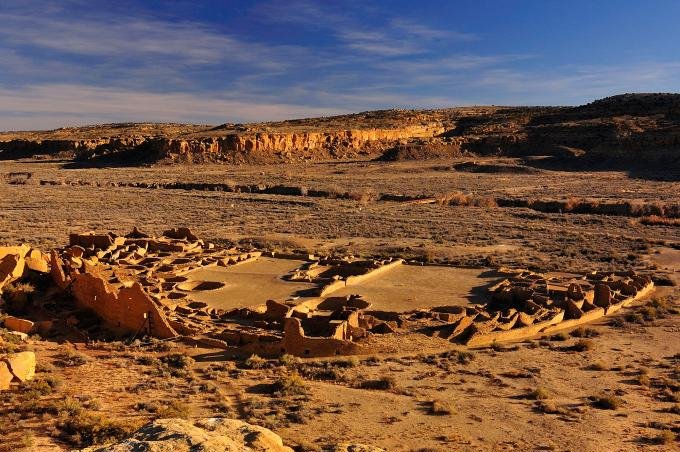One of the great houses of the Chaco Canyon settlement near what is now Mesa Verde, Colorado. Photo by WSU
PULLMAN, Wash., April 1 (UPI) -- The disappearance of the ancestral Pueblo people from southwestern Colorado has long puzzled scientists, but the archaeological record shows it's not at all surprising.
The ancient history of the Southwest is ripe with periods of boom and bust. A new study highlights four major cultural shifts that preceded the collapse of ancestral Pueblo society.
Researchers at Washington State University looked at a combination of climate and cultural data from 1,000 southwest archaeological sites and some 30,000 tree-ring dates. Their analysis identified four instances of drought followed by significant cultural shifts.
Climate change not only inspired people to abandon settlements and relocate, but also rethink their entire way of life.
The Pueblo people's maize-based agriculture was "woven together with a web of ceremony and ritual that required belief in the supernatural," Tim Kohler, archaeologist and Washington State professor, explained in a press release.
When crops failed, people questioned their entire belief structure -- they went back to the map and the cultural drawing board.
"Then there's a point where people say, 'This isn't working. We're leaving,'" Kohler said.
Prior to each shift, the people of the American Southwest experience periods of cultural exploration.
"There's a new period of wealth creation, investment in architecture and culture change," explained Kohler.
After a mild drought interrupted growth in the year 700, the Pueblos stopped storing maize in communal underground chambers and began keeping private stashes, controlled by households or family groups, in rooms above ground. This period, known as Pueblo I, ended with a large drought in 890.
The next period of exploration, Pueblo II, featured large, shared plazas and great houses in Chaco Canyon near what is now Mesa Verde, Colorado.
"We're talking some of the largest -- actually, the largest -- prehistoric masonry structures in North America north of Mexico," said Kohler. "These things are huge."
The boom time was again interrupted by drought in 1145.
Pueblo III featured the most social inequality of any period and peaked around 1250. The expansion period ended with the largest of the four droughts.
Pueblo IV featured a return to more egalitarian social structures.
"It's as if everybody has equal access to where all the important stuff happens," said Kyle Bocinsky, an anthropologist at Washington State. "That's been interpreted as being far more egalitarian in how people were organizing themselves as a society than what we see during any of the previous periods."
Kohler and Bocinsky say the motivation to rethink social, economic and political structures in the wake of disaster is something seen today with the currents populism running through the 2016 presidential campaigns.
"A lot of the nation has not recovered since 2008, and what you're seeing is a populist movement to radically reorganize the way that politics is done in this country," said Bocinsky. "We're seeing that need to reorganize four times in the Pueblo record."
The researchers published their findings in the journal Science Advances.















